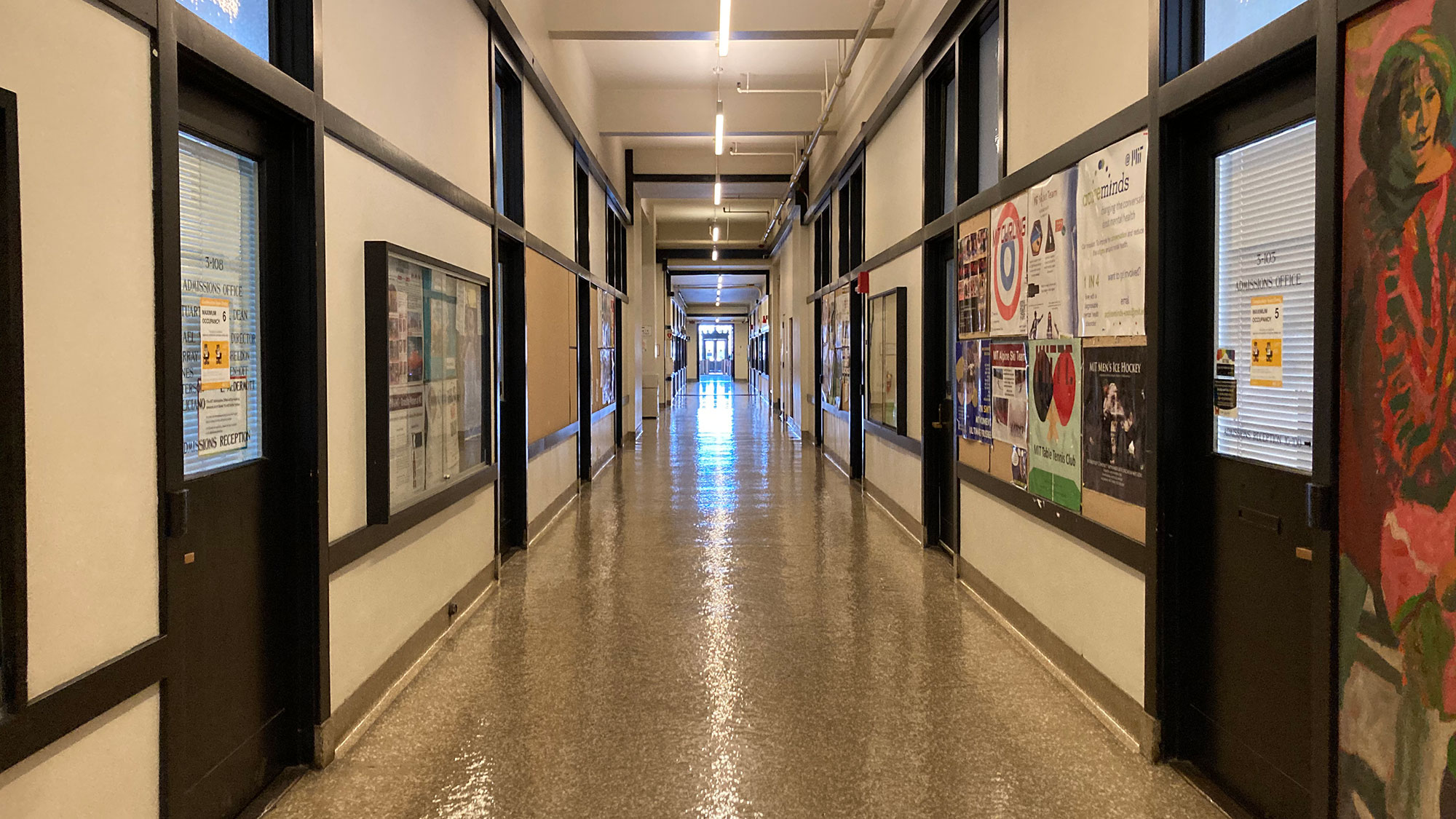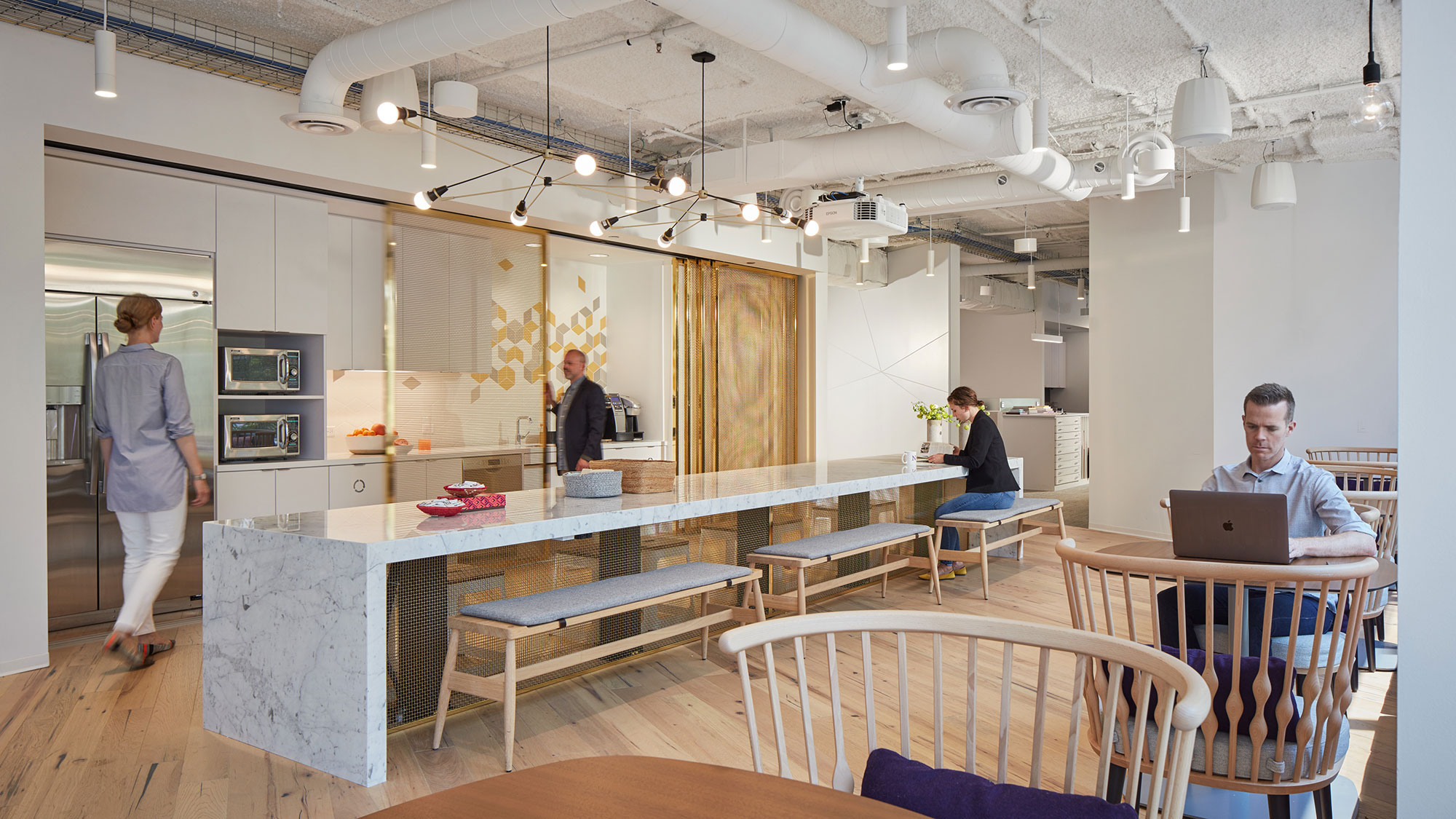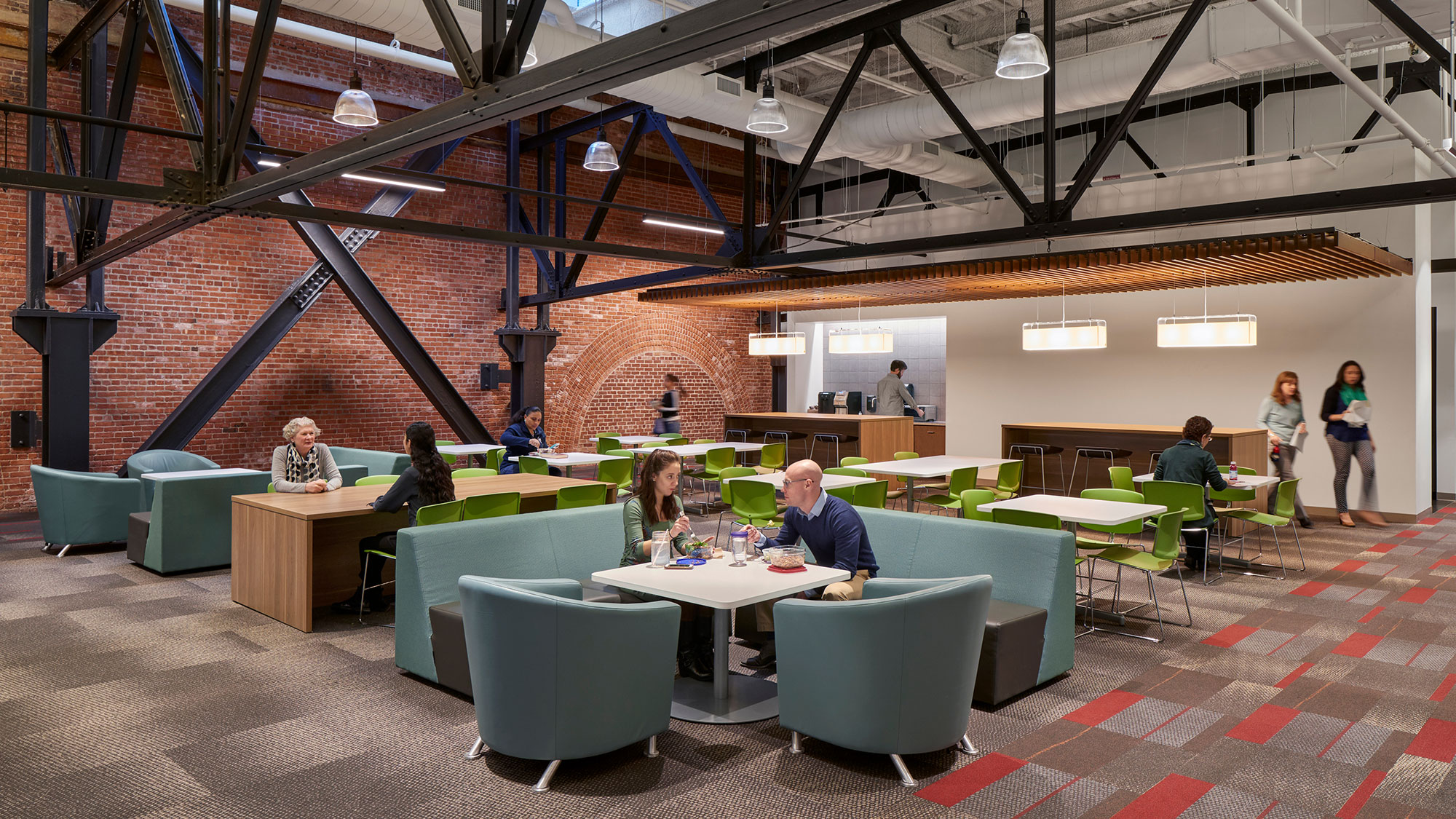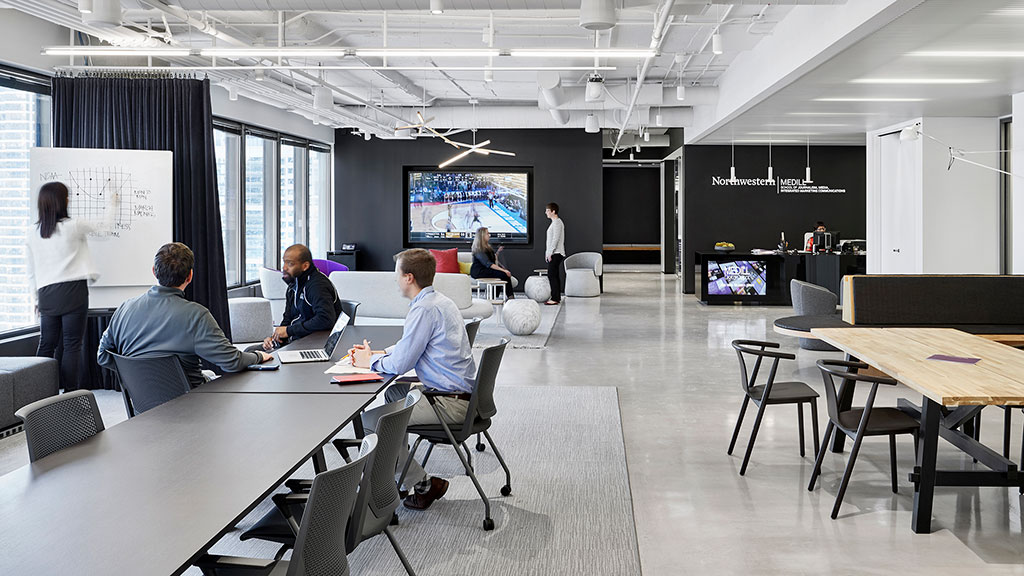Building a Better Academic Workplace
May 10, 2022 | By David Craig, Melany Park
Having endured since the Middle Ages, the traditional academic workplace might finally have reached a breaking point. Changes in collaboration, finances, and individual work patterns are making traditional workplace practices unsustainable. One major issue has been the fragmentation of the academic workplace — within buildings, across campuses, and even outside them — which is compromising collaboration and community among faculty and staff, while filling campuses with more underutilized space. New solutions, however, could stem waste, strengthen community, and better support the way faculty and staff increasingly want to work.
What’s Happening in Universities
CollaborationWork in universities has been getting steadily more collaborative for years, with the average number of coauthors per peer-reviewed article more than doubling between 1980 and 2016. Demand for interdisciplinary research and learning is also growing. Even on the staff side, headcounts have ballooned as new support functions, and the connections they entail, have proliferated. Physically bringing people together, however, can be challenging. Faced with new and expanding functions, many universities have gone the opposite direction, relocating whole groups off campus, away from the culture and communities they serve.
FinancesUniversity finances are getting less predictable. Two significant sources of university funding — federal R&D spending and state appropriations for public universities — are lower than they were 15 years ago. Some sources of revenue have been growing, like online degree programs and foreign student enrollment, but the pipeline of foreign students is threatened by global instability and online learning may face growing competition from Massive Open Online Courses (MOOCs) and bootcamps. All this uncertainty calls for more operational agility and efficiency.
FlexibilityLike all industries, universities are seeing a demand for more flexible work. Based on our client surveys, staff benefited the most from remote work during the pandemic, with satisfaction and sense of productivity significantly higher. But even faculty, whose connections with students were constrained at the height of the pandemic, reported high satisfaction with remote work overall. In fact, in surveys we conducted at three schools in 2020 and 2021, staff and faculty respectively said on average that they would ideally work 3.3 and 2.3 days per week remotely after the pandemic, a significant increase from pre-pandemic norms.
Problems With Traditional Academic Workplaces
While universities increasingly need agility, flexibility, and connectivity, traditional workplace practices are holding them back.
LabyrinthsUniversity workplaces, compared to workplaces in other sectors, are often defined by hallways, an iconic example being the 825-foot-long “infinite corridor” at MIT. In old buildings, hallways might play a structural role. In modern buildings, they are simply a relic of old planning practices. Hallways are sometimes the only community spaces in buildings, but they often become labyrinths that are more likely to divert and disperse than connect.

One-size-fits-all
The earliest university facilities resembled monasteries, with cells allotted to professors for writing and mentoring. The same cellular structure describes many modern academic workplaces, with offices the basic unit of space. When space is limited or not needed for activities like writing or mentoring, single offices often get assigned to two or more people, or turned into suites. While convenient from a planning perspective, making the office the basic unit of space limits functionality and maximizes segmentation, spawning the aforementioned labyrinths.
TerritorialityA common practice in universities is to give departments control over how to use their space. While that may make it easy to align workplace decisions with local needs, it also results in the duplication of resources. Conference rooms are a classic example. Each department, regardless of size, often has a room in which to convene their faculty and staff. While most of these rooms will be empty in any given hour, finding available meeting space is often a major problem, simply because faculty and staff have little or no access to spaces outside their group.
Status-based allocationProfessional standing and tenure have a major influence on how space is allocated in most universities, predicting the size and location of offices, and whether they are assigned. Illustrating the disconnect between status and need, we found across a series of recent client studies that the larger a person’s individual space, the less they say they use it on average. In addition to creating waste, allocating space based on status can also lead to inequities, as when fundamental needs, like access to natural light, are only selectively met.
How to Build a Better Academic Workplace
There’s no simple answer that will fix every university workplace problem, but here are three design interventions that could help:
1. Provide more variety and choice.Instead of trying to accommodate the majority of activities that faculty and staff do in one type of space, universities should try supporting a wider variety of needs with a wider variety of spaces. To take advantage of variety, universities also need to foster a culture of sharing, replacing individual entitlements with group ownership. This doesn’t mean space can never be assigned or controlled, but the more it is shared, the more a university will be able to align it with their cumulative needs.

2. Design at a neighborhood scale.
Another way to create a better academic workplace is to organize spaces into well-defined neighborhood-scaled clusters. Clustering helps foster identity and community, which is lacking in many university workplaces today. Providing a locus in which group norms and a sense of shared accountability can form also helps groups manage sharing organically. And while neighborhood-scaled clusters tend to have an insular focus, we’ve also found that aggregating multiple clusters around other resources (like larger meeting spaces or cafes) catalyzes serendipitous interactions across them, building community at multiple scales.

3. Approach change gradually.
Moving away from centuries-old standards will require significant behavioral and psychological change. Faculty and staff need to be part of the process, and how they work and what drives their success need to be examined and acknowledged. New solutions should also be tested and iterated before being standardized. Implementing large-scale change based on non-academic (e.g., corporate) models without local research will likely create large-scale problems. Small-scale pilots, by contrast, can make change more manageable and measurable, and allow more focus to be put on helping users adapt. Once refined and validated, the results will provide a foundation for wider implementations.
Today’s universities face a host of new challenges and demand new thinking. More agile, efficient workplaces that bring faculty and staff closer together while supporting evolving individual needs is key to their continued success.
For media inquiries, email .


